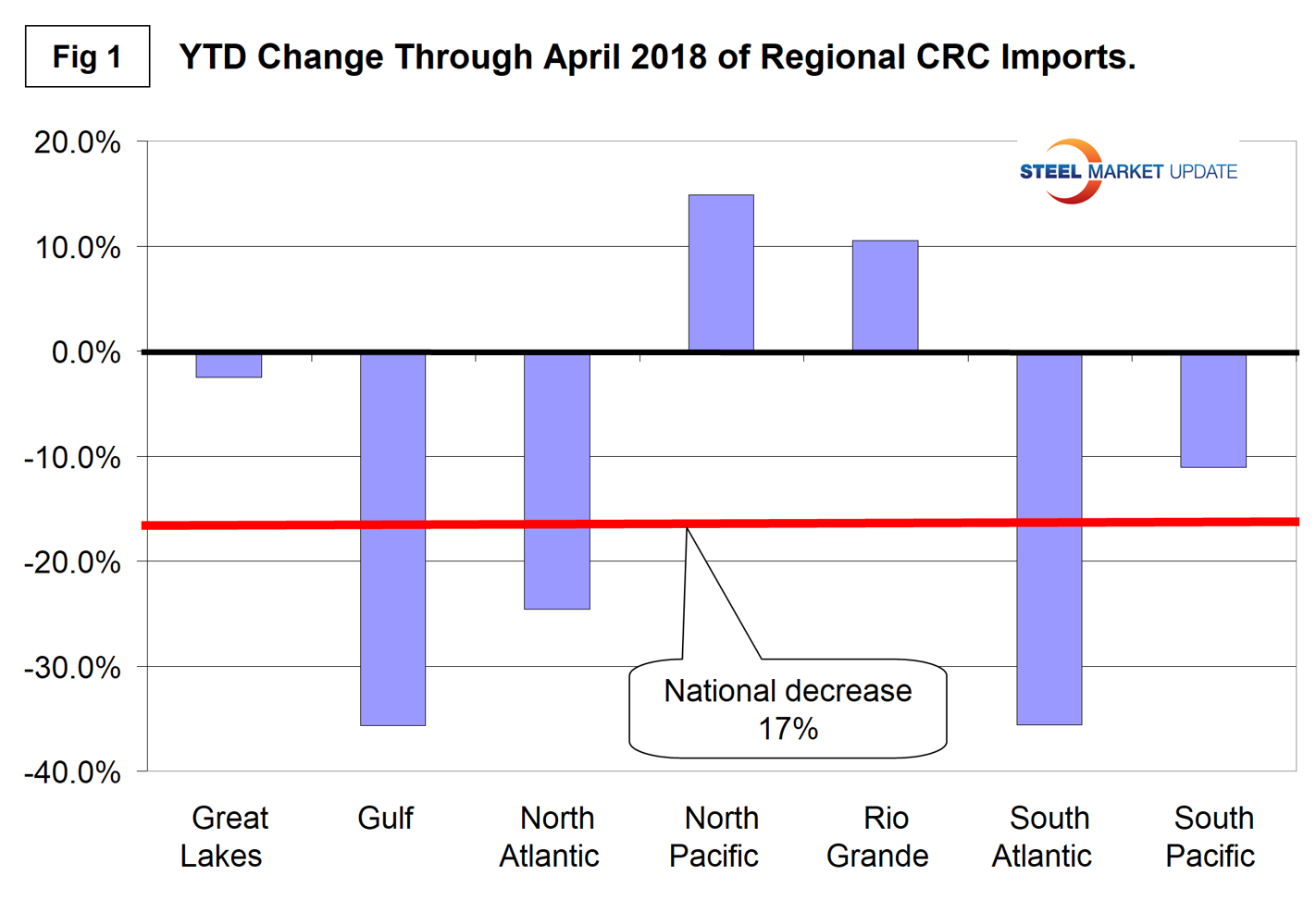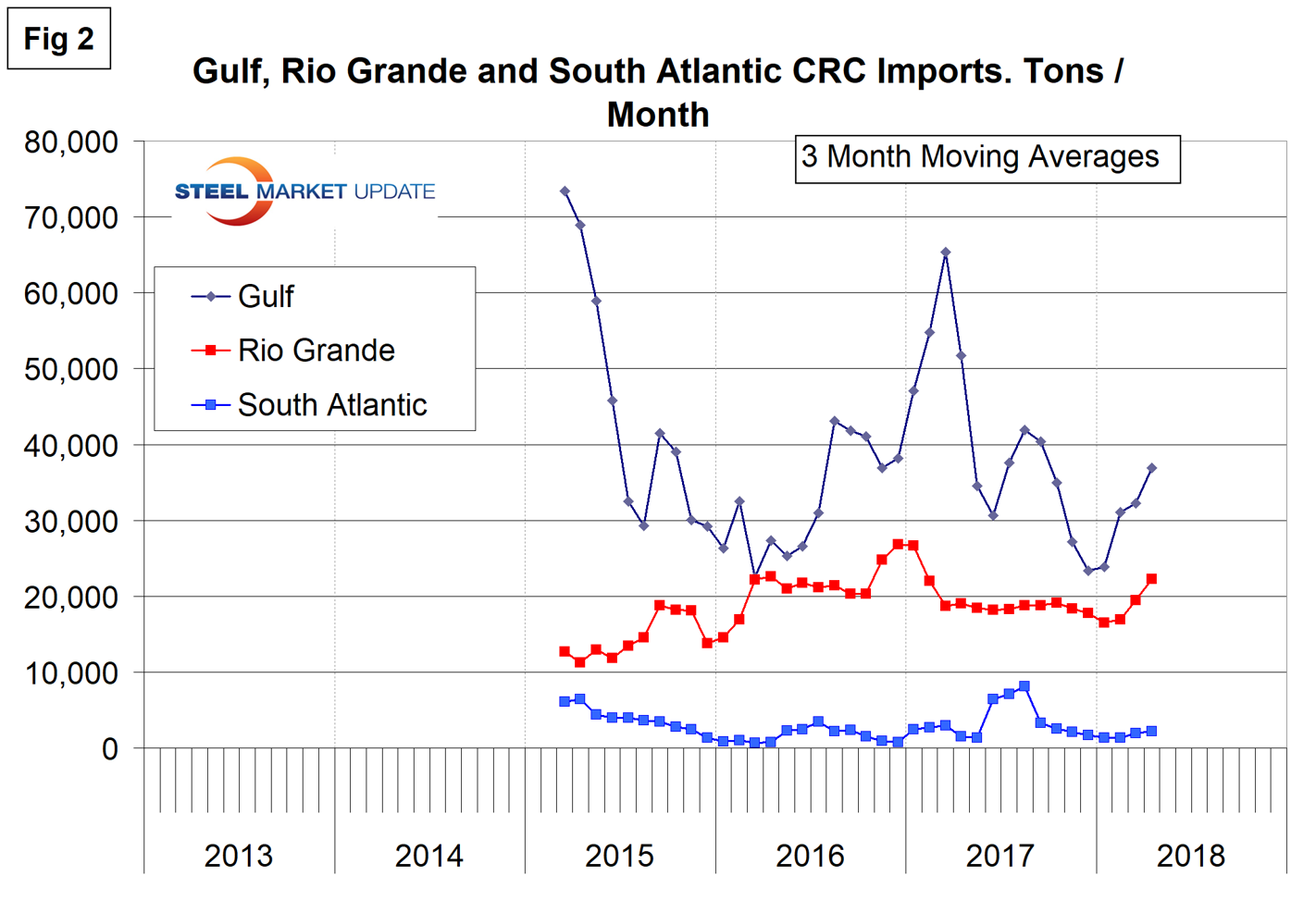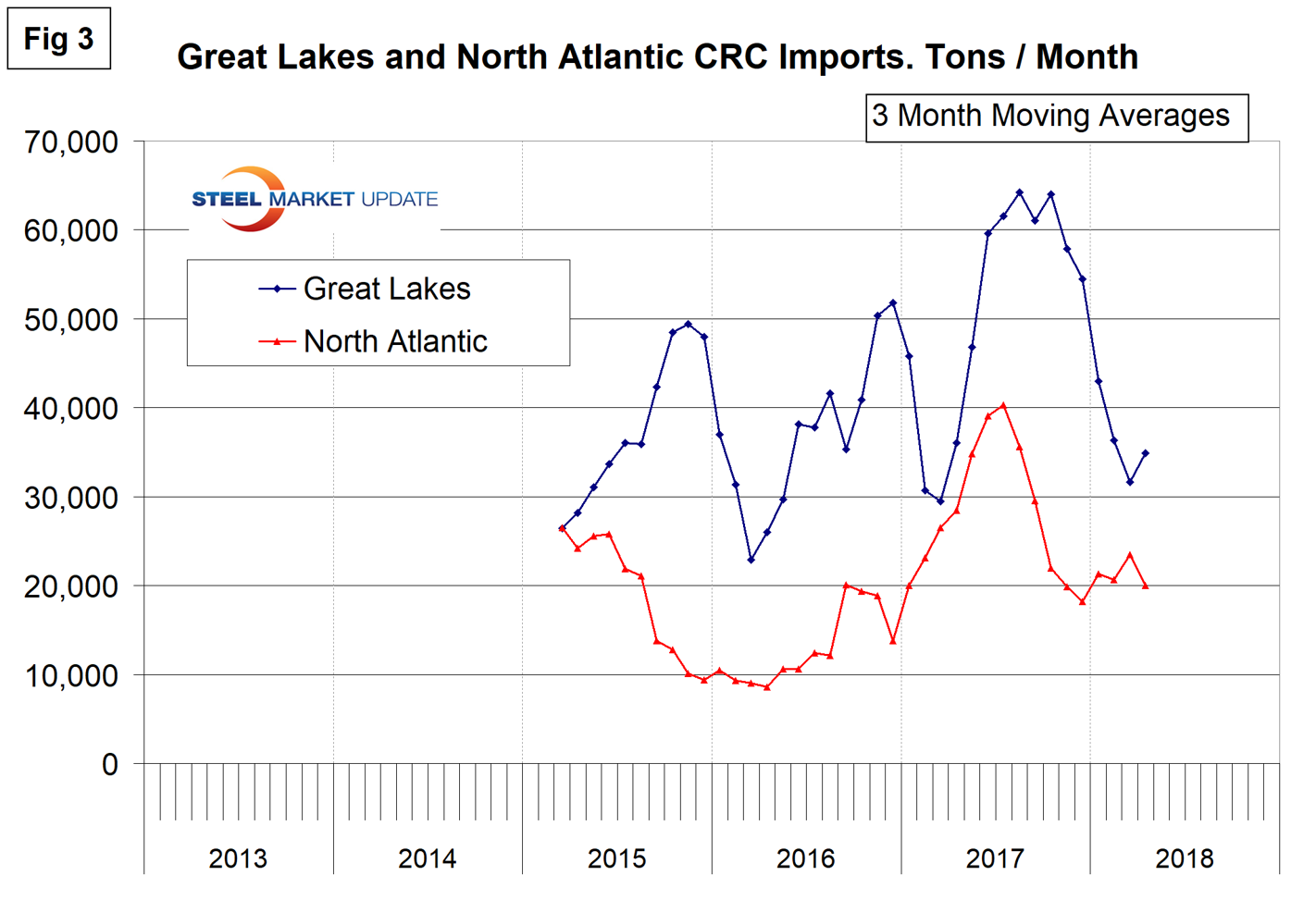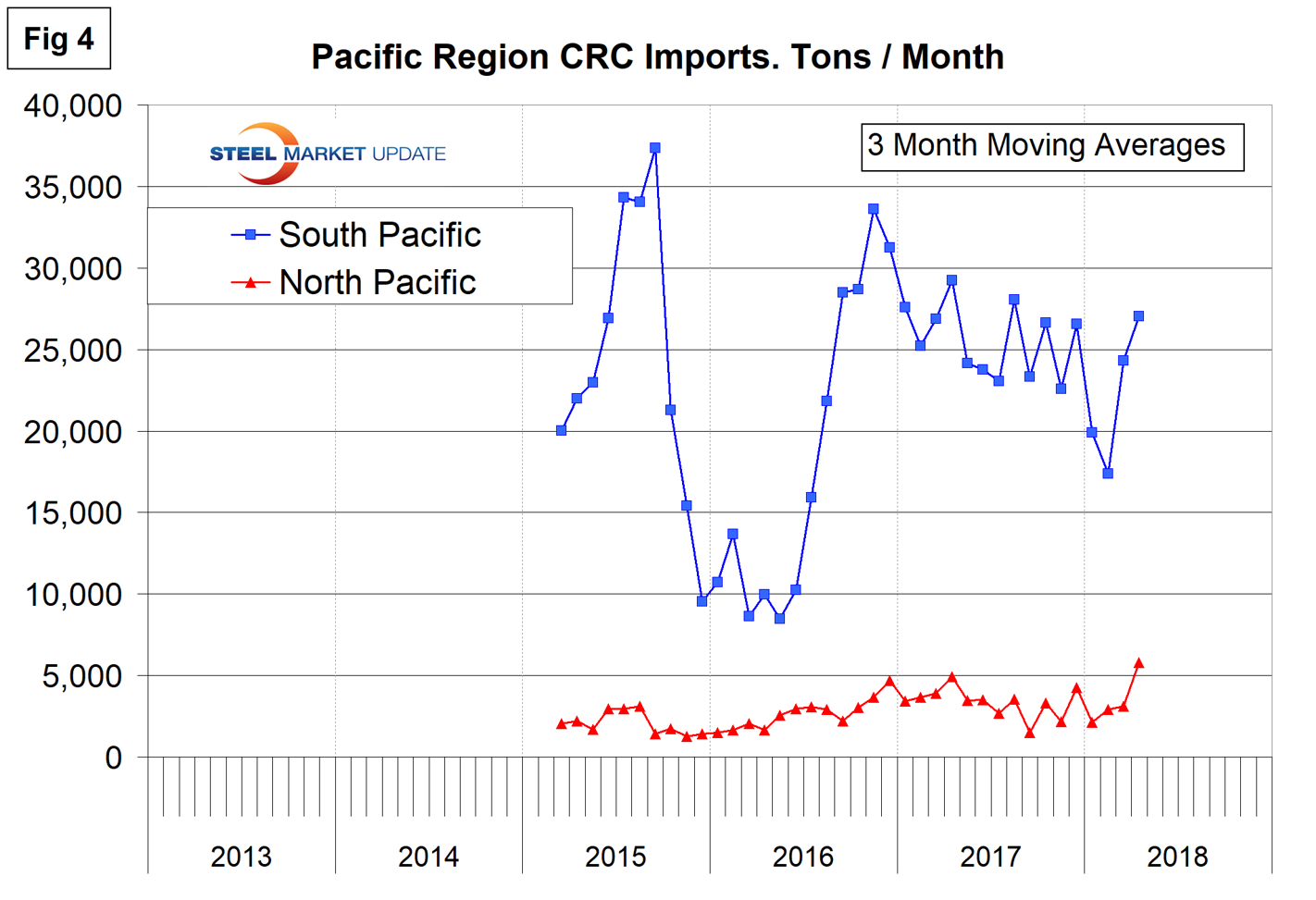SMU Data and Models

SMU Premium-Level Report: CRC Imports by Region
Written by Tim Triplett
June 14, 2018
Editor’s Note: Not a Premium-level subscriber to SMU? See the sample Premium report below:
Overall, U.S. imports of cold rolled coil declined by 17 percent year to date through April, but some regions saw increases.
Imports can vary significantly from one region to another. Steel Market Update has produced import reports by product at the national level and detailed reports at the port level by source nation. This new analysis of U.S. International Trade Commission data plugs the gap between SMU’s other reports by identifying changes at the regional level. Produced for the first time this week are reports on hot rolled, cold rolled and hot-dipped galvanized steel.
Figure 1 shows the year-to-date change in CRC imports for each of seven regions and the change at the national level. The North Pacific and Rio Grande have experienced increased volume, the Great Lakes region has about broken even and the other regions have had substantial decreases.

Figures 2, 3 and 4 show the history of CRC coil imports by region since March 2015 on a three-month moving average basis.
Imports into the Gulf have been very erratic with peaks in March 2015 and March 2017. Next time we publish, we will push this data back to March 2013. The Gulf currently has the highest volume, followed by the Great Lakes. Cold rolled imports coming across the Rio Grande and also into the South Atlantic have been fairly consistent for over three years.

The Great Lakes and North Atlantic regions have also been very erratic since March 2015, with recent peaks in the second half of last year.

Volume into the South Pacific ports of San Diego and Los Angeles collapsed in the second half of 2015, recovered in the second half of 2016, and has been on a declining trend since then. Volume into the North Pacific ports has been consistently low.

Executive-level subscribers can upgrade to Premium-level content by emailing info@SteelMarketUpdate.com or calling 772-245-8630.

Tim Triplett
Read more from Tim TriplettLatest in SMU Data and Models

SMU Scrap Survey: Sentiment Indices rise
Both current and future scrap sentiment jumped this month, though survey participants reported responses before key trade news was announced.

SMU Survey: Sentiment splits, buyers have better view of future than the present
SMU’s Steel Buyers’ Sentiment Indices moved in opposite directions this week. After rebounding from a near five-year low in late June, Current Sentiment slipped again. At the same time, Future Sentiment climbed to a four-month high. Both indices continue to show optimism among buyers about their company’s chances for success, but suggest there is less confidence in that optimism than earlier in the year.

SMU scrap market survey results now available
SMU’s ferrous scrap market survey results are now available on our website to all premium members. After logging in at steelmarketupdate.com, visit the pricing and analysis tab and look under the “survey results” section for “ferrous scrap survey” results. Past scrap survey results are also available under that selection. If you need help accessing the survey results […]

SMU flat-rolled market survey results now available
SMU’s latest steel buyers market survey results are now available on our website to all premium members. After logging in at steelmarketupdate.com, visit the pricing and analysis tab and look under the “survey results” section for “latest survey results.” Past survey results are also available under that selection. If you need help accessing the survey results, or if […]

SMU Survey: Sheet lead times stabilize, plate contracts
Mill lead times for sheet products were steady to slightly longer this week compared to our late June market check, while plate lead times contracted, according to steel buyers responding to this week’s market survey.
